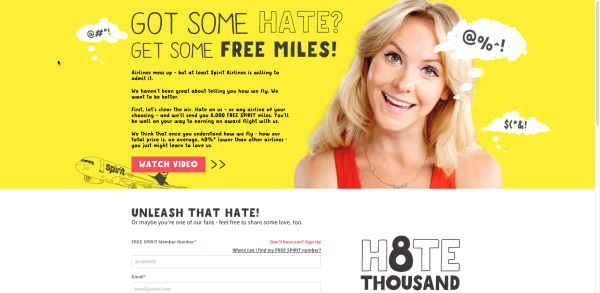There are some brands we are stuck on, others we’re stuck with. Brands we’re stuck on are those where we’ve developed a relationship out of our own free will (Apple, Starbucks, Zappos). Brands we’re stuck with are those where we’ve become trapped through contracts (phone carriers, cable companies), switching costs (banks, software) or incentives (airlines via their loyalty programs).
If consumer loyalty is measured by repeat purchases alone, both sets of brands look pretty similar. But throw in some measures around sentiment and you’ll see a clear difference between the loved and the unloved. Consumers’ feelings about the two types of brands couldn’t be more different.
As marketers it’s important that we know what kind of consumer loyalty we are getting and act accordingly.
Brands that are loved can tap into the wells of existing consumer passion and spread that love around. If you ask passionate consumers for their help, they will give it and become even more engaged as a result.
Brands that are not loved need to be more careful especially when it comes to their relationship with their consumers and how to engage with them. These consumers, given the opportunity, are more likely to vent their frustrations than show support. Marketing activities for these brands are often more about damage control and placating consumers so they don’t try and escape. That can come in the form of reselling the benefits that locked the consumers in to begin with (See all the great places you can go with these miles you’ve earned), building even higher walls to make sure the captive consumers don’t get out (Now, triple miles with every flight), breaking down the walls of the competitors (Switch today and we’ll pay the penalty fees) or adding cognitive dissonance by pointing out some good things that they do (Here’s how we’ve given back to the community).
There are a few brands that have decided to go all-in and embrace the hate. Ryanair, the Irish low-cost airline, was a pioneer of this strategy. The company is consistently ranked at the top of lists of most hated brands. People fly the airline because of its prices but love to hate it for its poor customer service, add-on fees and rude staff. But the company has made no apology for any of this, rather through the aggressive voice of its CEO, Michael O’Leary and some blunt advertising basically tells its customers to shut up and get over it. Spirit Airlines, also unloved, tried the same approach with a campaign that asked its frequent flyers to submit statements of hatred for the airline and earn free miles! For most brands this kind of in-your-face approach would be too much to stomach but, for the right kind of fighter/outsider brand, it may work.

Whichever path chosen, some sober self-assessment and honesty about your relationship with your customers and the foundations on which it is built will help guide marketing in the appropriate direction.
The Blake Project Can Help: The Brand Positioning Workshop
Branding Strategy Insider is a service of The Blake Project: A strategic brand consultancy specializing in Brand Research, Brand Strategy, Brand Licensing and Brand Education




